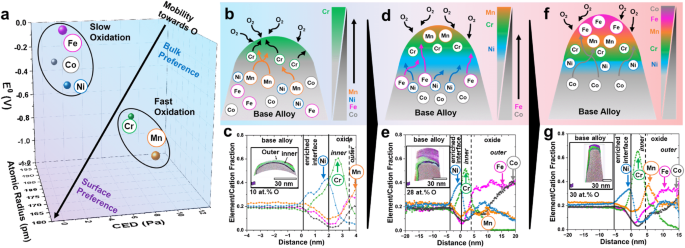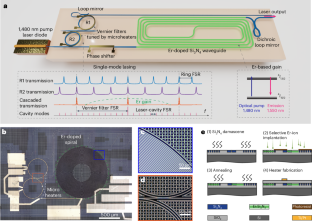2024-06-12 パシフィック・ノースウェスト国立研究所(PNNL)
<関連情報>
- https://www.pnnl.gov/news-media/metal-alloys-can-take-heat
- https://www.nature.com/articles/s41467-024-49243-8
高エントロピー合金における特定酸化物成長のメカニズム解明 Mechanistic understanding of speciated oxide growth in high entropy alloys
Bharat Gwalani,Andrew Martin,Elizabeth Kautz,Boyu Guo,S. V. Lambeets,Matthew Olszta,Anil Krishna Battu,Aniruddha Malakar,Feipeng Yang,Jinghua Guo,Suntharampillai Thevuthasan,Ruipeng Li,Aram Amassian,Martin Thuo & Arun Devaraj
Nature Communications Published:12 June 2024
DOI:https://doi.org/10.1038/s41467-024-49243-8

Abstract
Complex multi-element alloys are gaining prominence for structural applications, supplementing steels, and superalloys. Understanding the impact of each element on alloy surfaces due to oxidation is vital in maintaining material integrity. This study investigates oxidation mechanisms in these alloys using a model five-element equiatomic CoCrFeNiMn alloy, in a controlled oxygen environment. The oxidation-induced surface changes correlate with each element’s interactive tendencies with the environment, guided by thermodynamics. Initial oxidation stages follow atomic size and redox potential, with the latter becoming dominant over time, causing composition inversion. The study employs in-situ atom probe tomography, transmission electron microscopy, and X-ray absorption near-edge structure techniques to elucidate the oxidation process and surface oxide structure evolution. Our findings deconvolute the mechanism for compositional and structural changes in the oxide film and will pave the way for a predictive design of complex alloys with improved resistance to oxidation under extreme conditions.



